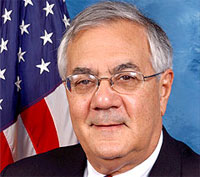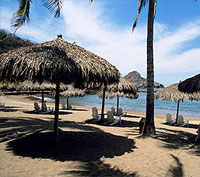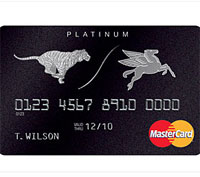THAT'S one whipped boyfriend
farm4.static.flickr.com — Is there such a thing as TOO much chivalry?
Adding Value To The World, one Post At A Time
farm4.static.flickr.com — Is there such a thing as TOO much chivalry?
Posted by gjblass at 4:58 PM 5 comments
Labels: Subway

Jack-o’-lanterns aren’t just for kids fumbling with safety knives anymore. The art and craft of carving the perfect pumpkin has gone from simple Halloween tradition to passionate pursuit, fueled by geeky obsessions and modern tech.
Take the ghoulish gourd disembowelers at Maniac Pumpkin Carvers.
Run by Parsons School of Design grads Marc Evan and Chris Soria, the New York-based operation cranks out custom pumpkins covered with intricate designs.
“Our inspiration comes from a steady flow of hot coffee and horror films,” said pumpkin artiste Evan. “We love carving images based off the movies and comics we grew up with. The movies that we can quote years later, that fueled our overactive imaginations and our scariest nightmares.”
Posted by gjblass at 4:55 PM 0 comments
Labels: Pumpkin Carving
Bill Clinton is greeted by cheering crowds at his statue
Former US President Bill Clinton has attended the unveiling of a statue of himself in Kosovo's capital Pristina.
The 3.5m (11 ft) bronze statue was inaugurated at Bill Clinton Boulevard - to loud cheers of thousands of ethnic Albanians.
Many of them regard Mr Clinton as a hero for launching Nato's air bombing campaign to drive Yugoslavia's troops out of the Serbian province in 1999.
Kosovo unilaterally declared independence from Belgrade last year.
The move was supported by the US and many Western powers, but a number of countries - including China and Russia - still regard Kosovo as part of Serbia.
'Big statue'
Mr Clinton waved to the crowds as the red cover was pulled off from the statue on Sunday.
 |
"I never expected that anywhere, someone would make such a big statue of me," Mr Clinton was quoted as saying by the Associated Press news agency.
The statue portrays the former president with his left arm raised while holding documents bearing the date when Nato started its air campaign against Yugoslavia - 24 March 1999.
At the time Yugoslav forces of the late President Slobodan Milosevic were attempting to suppress an ethnic Albanian insurgency in Kosovo.
The 78-day bombing forced the Yugoslav army to leave, placing Kosovo under UN administration.
But Mr Clinton's statue is unlikely to be revered by the Serbs who see Washington as the driving force behind a plan to tear away Serbia's cherished southern province, the BBC's Mark Lowen in Belgrade says.
Posted by gjblass at 4:27 PM 0 comments
Labels: Bill Clinton, President Clinton, Statue
pisico.com — The Most Beautiful Places Of China including city districts, show caves, country towns, grasslands, marshlands, islands, forests, glaciers...
Click here for the Gallery: The Most Beautiful Places Of China [113 PICS]
Posted by gjblass at 4:08 PM 0 comments
Labels: Abandonded Photography, China, People's Republic of China
In the late 19th and early 20th century, enigmatic photographer T. Enami (1859-1929) captured a number of 3D stereoviews depicting life in Meiji-period Japan.
A stereoview consists of a pair of nearly identical images that appear three-dimensional when viewed through a stereoscope, because each eye sees a slightly different image. This illusion of depth can also be recreated with animated GIFs like the ones here, which were created from Flickr images posted by Okinawa Soba. Follow the links under each animation for the original stereoviews and background information.

[Geisha washing their hands in the garden]

[Torii gates at Inari shrine, Kyoto]

[Geisha girls with flowers and cat]

[Traveler in the mountain fog near Chujenji]

[Tokyo Industrial Exposition, Ueno Park, 1907]

[Campfire on the peak of Mt. Myogi, Nakasendo]

[Geisha drinking beer in the park]
Posted by gjblass at 3:27 PM 0 comments
Labels: 3D, 3D Art, stereoscope
Posted by gjblass at 3:08 PM 0 comments
Labels: Christopher Walken, Lady Gaga, youtube
 Photo: Chuck Kennedy / White House Photo Office |
| President Obama discussed credit-card reform in Rio Rancho, N.M., in May. |
The Bill
Credit card companies are socking it to consumers left and right.
They're hiking interest rates to as much as 36% and doubling minimum monthly payments, frustrating customers who are already cash-strapped and credit-crunched.
In an effort to curb these abusive practices, President Obama signed into law a credit card reform act in May that's rolling out in three parts over 12 months.
At the same time, credit card companies have been hard at work coming up with new ways to boost profits while sidestepping the reforms.
"Card issuers are making sure they can make up the lost money in new ways," said Bill Hardekopf of Lowcards.com, a research company funded by a commercial debt collector.
The first part of the law, which took effect in August, requires banks to give customers more notice ahead of major changes to their accounts, like rate hikes. Starting in February, limits will be imposed on when issuers can raise rates on existing card balances, and on new cards. In August 2010 some credit card penalty fees will be will reined in.
But no legislation can fully shield consumers from the credit card industry's ongoing efforts to boost the bottom line.
The worst part? "All of these hikes are taking place simply because they can," Hardekopf said.
 Photo: Youtube.com |
| Ann Minch's YouTube video convinced BofA to drop her rate to 12.99%. |
1. Rate Hikes
Interest rates are out of this world.
"They've increased steadily over the past 5 years, and in general are higher than they've ever been," said Josh Frank, senior researcher at the Center for Responsible Lending (CRL), who says he's seen annual percentage rates as high as 36%.
No current laws cap credit card interest rates, according to Pamela Banks of Consumers Union, the nonprofit publisher of Consumer Reports, so technically the sky's the limit.
But the CARD act will help curb abusive practices. As of February, issuers won't be able to arbitrarily raise rates on existing balances. But cardholders will still be subject to interest hikes for late payments and various other infractions.
And card companies will be able to raise their rates as high as they want, whenever they want, on future purchases even after the reform bill kicks in completely.
The act will bring protections for new customers; issuers will no longer be able to hike rates on new accounts in the first 12 months, unless the borrower is delinquent by more than 60 days or the increase is stated in the contract.
Keven Vallance recently saw the rate on his Sears card increase from 9.99% to 13.99% for no apparent reason. When Vallance called Sears Credit, which is owned by Citibank, a rep told him every cardholder's rate is increasing by 4%.
Citi spokesman Samuel Wang said in an email that the company has "adjusted pricing and card terms for some customers as part of our regular account reviews."
Consumer outrage is boiling over. Last month, a disgruntled Bank of America customer posted a YouTube video complaining her bank "jacked up my interest rate to a whopping 30% APR." Her rant went viral, and BofA dropped her rate back to its original 12.99%.
 Courtesy: House.gov |
| Rep. Barney Frank hopes a new consumer protection agency can curb credit card fees. |
2. New Fees
Fees aren't just rising -- they're multiplying. Cardholders are getting slapped with fees they've never seen before.
The hitch: New laws can address only existing fees and business practices; they can't predict what credit card companies will do in the future.
"Theoretically, they could create a fee for names that begin with 'J,'" said Lowcards.com's Hardekopf.
In reality, customers are seeing new annual fees, inactivity charges and more. Not of these charges are unheard of, but many fees that were unusual are becoming commonplace.
Earlier this month, for instance, some Bank of America customers were shocked to learn that their no-fee credit cards would be subject to a new annual fee.
BofA spokeswoman Betty Riess said the fees are part of a company test that affects 0.5% of all consumer accounts, and that the fees range from $29-$99.
The charges will be levied in February, and Riess said customers were chosen "based on risk and profitability" but have the option to reject the fees by canceling their accounts.
Fifth Third Bank recently introduced a $19 inactivity fee for customers who don't charge anything for 12 months, and Citibank is hitting some consumers with a fee if they put less than $2,400 on their card annually.
To address this problem, House Financial Services Committee Barney Frank (D-Mass.) has proposed a new regulatory body, the Consumer Financial Protection Agency, which would approve new credit card fees. While the House Financial Service Committee approved the agency, it remains to be seen whether legislation will pass; lawmakers are battling over this and other reform proposals floating around Washington.
 Photo: Jupiterimages |
3. Higher Minimum Monthly Payments
Banks are also demanding bigger and bigger minimum payments. Chase has bumped up the minimum payment for some consumers to 5% of the monthly balance from 2%.
For someone who carries a $5,000 balance, that means the monthly payment of $100 skyrockets to $250 -- a whopping 150% increase.
Consumer Union's Pamela Banks says her organization has compiled a wealth of anecdotal evidence that indicates such increases in minimum monthly payments are widespread.
"This is making payments virtually impossible for some people," she said. "It's throwing people off when they were living on a tight budget anyway."
Some good news is on the way, however. After February, card companies won't be able to increase monthly minimum payments by more than 100%. For example, a bank cannot increase a 2% minimum payment to any higher than 4%. And this so-called "doubling" will be allowed only once during the life of the card.
 Photo: Photodisc / Jupiterimages |
4. Fewer Rewards
Say goodbye to beach vacations and new iPods just for swiping your card.
Rewards programs have been enticing shoppers to charge a purchase rather than paying cash -- but card issuers are cutting back those perks.
"This is happening with a significant amount of cards," Hardekopf said, adding that many consumers are now receiving 1% cash back instead of the 2% or 3% they once enjoyed.
American Express recently cut its Blue Card's cash back policy from 1.5% to 1.25%. And all AmEx customers who make a late payment will no longer accrue points on their purchases -- however, those points can be reinstated with a $29 fee.
 |
5. Slashed Credit Limits and Canceled Accounts
Without so much as a call from the bank, some customers are learning their credit limits have been slashed by as much as 75%, or that their accounts have been closed altogether, according to the Center for Responsible Lending's Josh Frank.
Citibank recently closed what a spokesman called a "limited number" of MasterCard gas cards co-branded with Citgo, ExxonMobil, ConocoPhillips and Shell.
"People go to make a purchase, and they find out about these huge changes only when they're denied," Frank said. "It's a shock, and it's been happening a lot."
Even cardholders who don't charge anything might find their accounts abruptly closed, Frank said. With credit losses at a record high, companies see inactive cards as a red flag and close the accounts to avoid the worry of future writedowns.
"Usually cardholders have this credit line available for an emergency, for this kind of current economic situation," Frank said. "But now they're turning to it when they need it, and it's gone."
What's a Cardholder to Do?
Consumers must pay close attention to the terms of their contracts, staying alert to any changes.
"It's boring reading, and it can be hard to understand, but that's where everything is spelled out," said Lowcards.com's Hardekopf.
Of course, while there are laws aimed at helping consumers, legislation can't do it all.
"As we close the loopholes on some things, they open up elsewhere," said Consumer Union's Banks. "Reform acts don't cover everything, and cardholders have to watch out for their own accounts."
And if you don't like your credit card's new terms? "Shop around -- you are not married to your card," Hardekopf said. "It's a partnership, not a lifelong contract."
Posted by gjblass at 1:00 PM 0 comments
Labels: credit, Credit Card, credit cards, Credit Score
A good example of what we can do with an empty whisky bottle.
Made by Janos Marton with the desire of a “more quiet, small and low power consumptioning computer to function as a basic home server”, the Whisky PC has proved to be one of the most weird and interesting inventions.








Janos Marton explains how he made this strange computer here.
Posted by gjblass at 11:20 AM 0 comments
Labels: build a pc, Pc Parts, Whisky